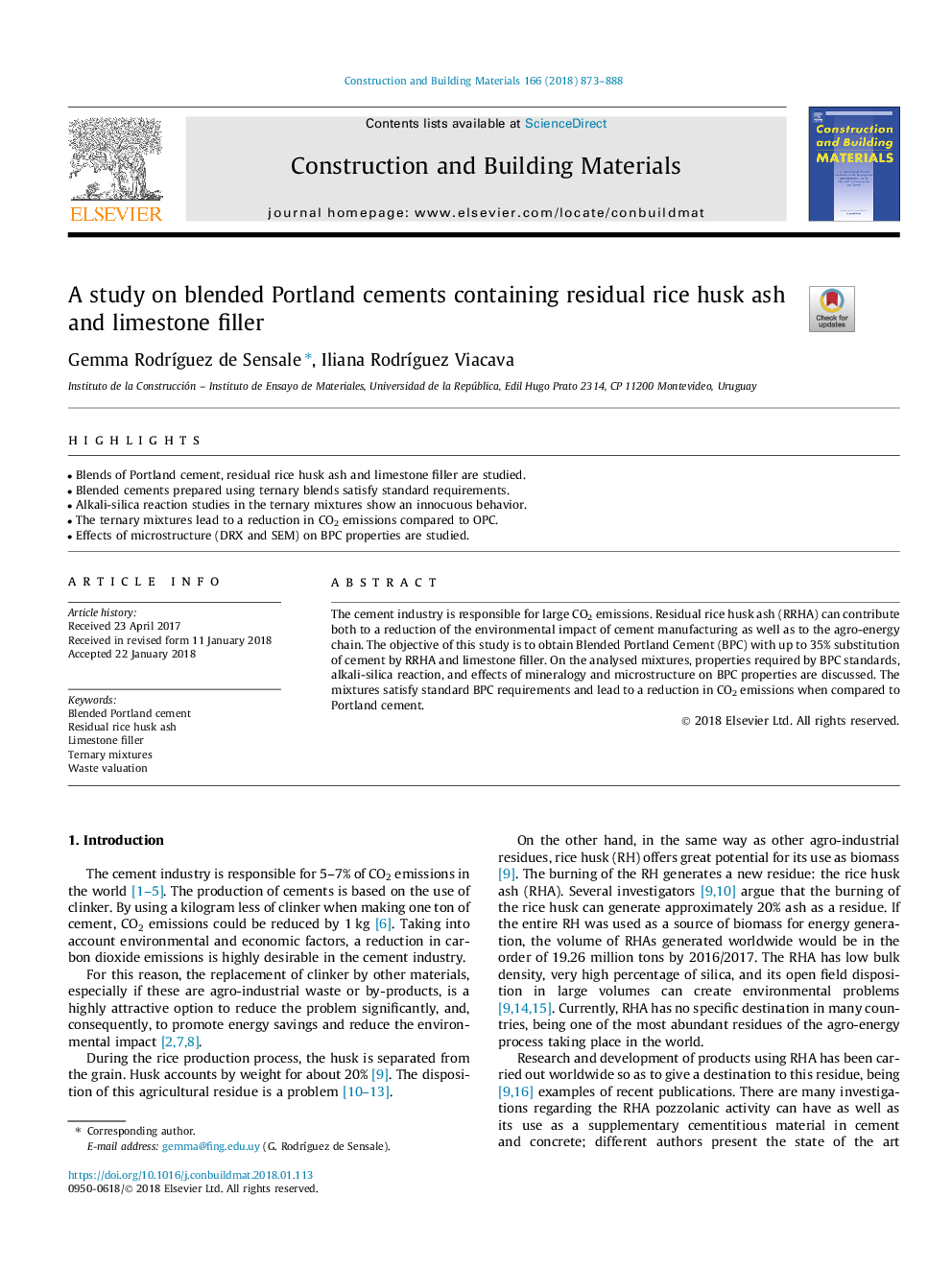| Article ID | Journal | Published Year | Pages | File Type |
|---|---|---|---|---|
| 6715444 | Construction and Building Materials | 2018 | 16 Pages |
Abstract
The cement industry is responsible for large CO2 emissions. Residual rice husk ash (RRHA) can contribute both to a reduction of the environmental impact of cement manufacturing as well as to the agro-energy chain. The objective of this study is to obtain Blended Portland Cement (BPC) with up to 35% substitution of cement by RRHA and limestone filler. On the analysed mixtures, properties required by BPC standards, alkali-silica reaction, and effects of mineralogy and microstructure on BPC properties are discussed. The mixtures satisfy standard BPC requirements and lead to a reduction in CO2 emissions when compared to Portland cement.
Keywords
Related Topics
Physical Sciences and Engineering
Engineering
Civil and Structural Engineering
Authors
Gemma RodrÃguez de Sensale, Iliana RodrÃguez Viacava,
